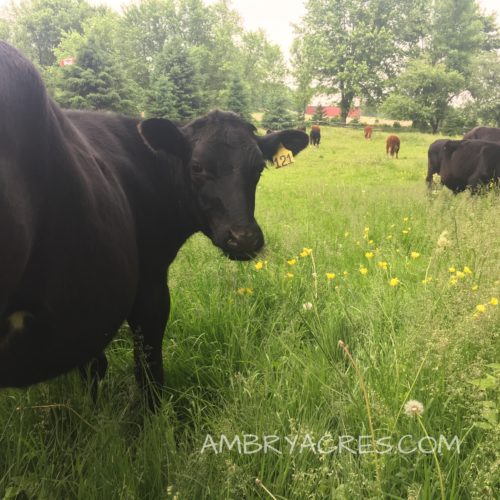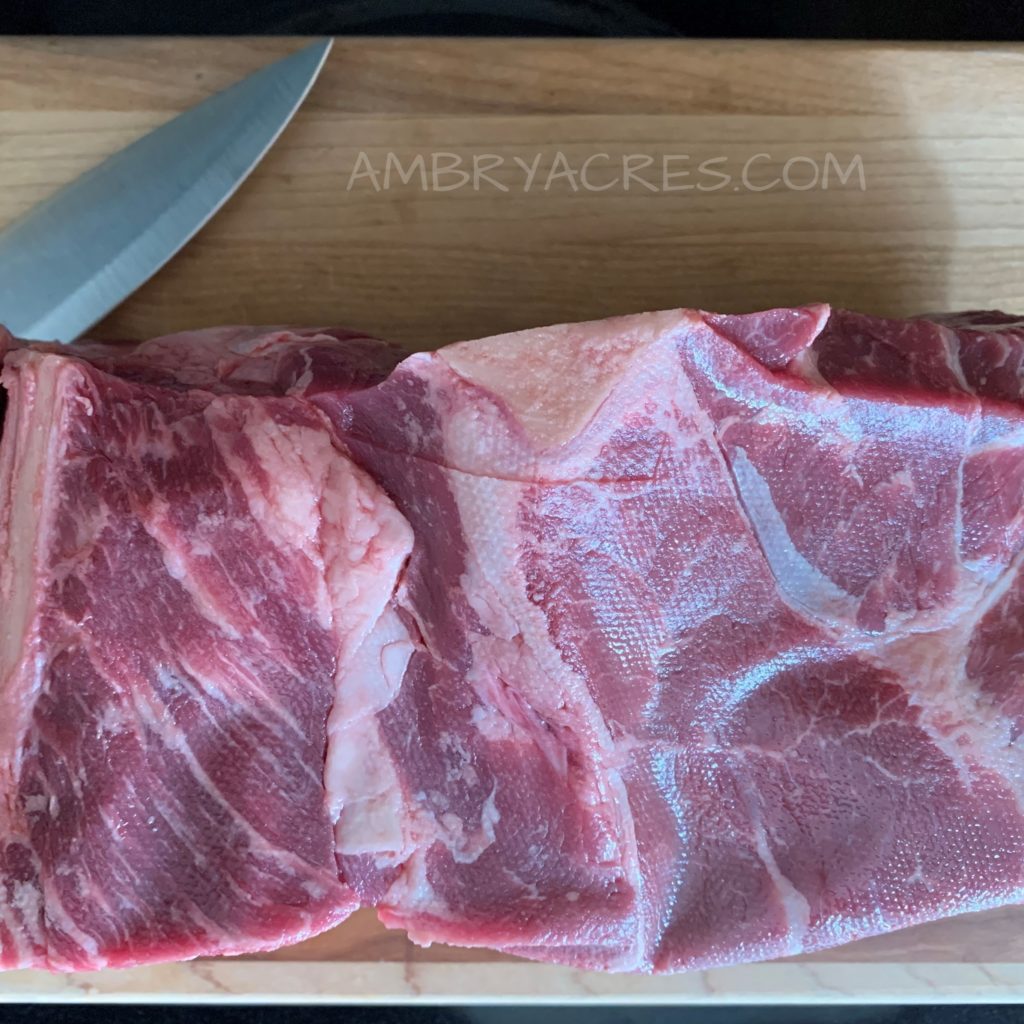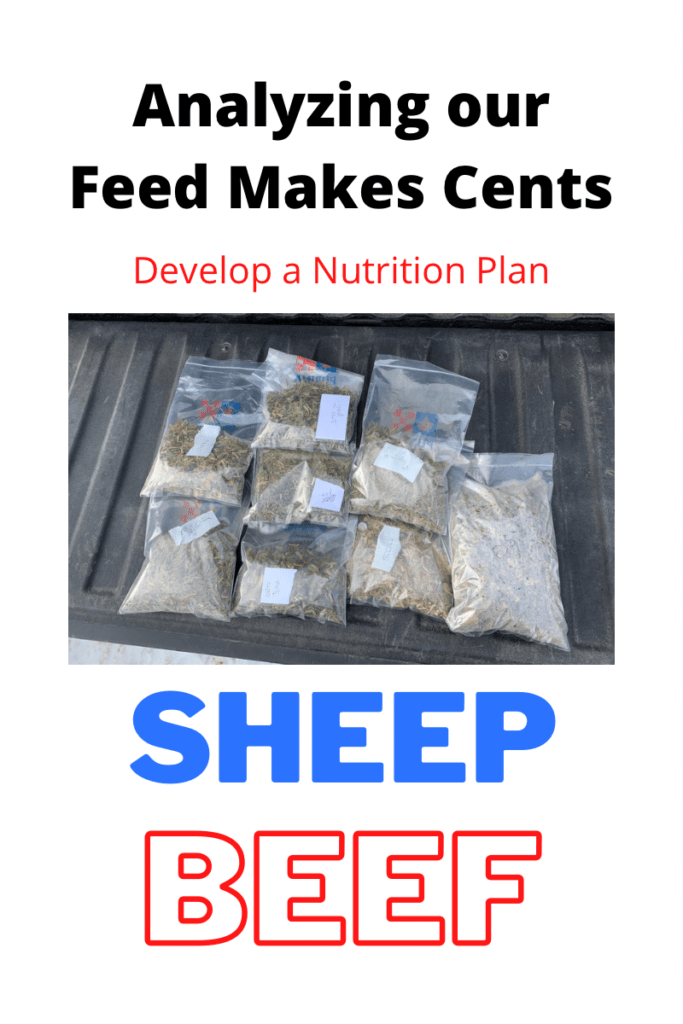Feeding our beef includes dry hay, balage, and oatlage. Balage is hay baled at higher moisture levels and gets wrapped which becomes silage. Oatlage is a field of oats that has been cut and baled at higher moisture levels then is wrapped which in turn ferments and becomes oatlage. This is fed to replacement heifers during the winter months only.
Watch our video to see how we make the feed for our beef herd:
Cattle eat forage for most of their lives by grazing out in pasture during the summer months, or as feed when pasture is under snow in the winter. Forage includes grasses as well as legume plants such as clover and alfalfa. As feed, forage will be fed to cattle dried as hay or as silage, a naturally fermented feed. Some grain may also be provided during winter to ensure the cattle have sufficient energy for growth.
Feed grains such as barley and corn are an excellent source of energy, a good source of protein and a fair source of all minerals except calcium.
Forage-based rations are fed to cattle before they are put on high grain rations. Forage rations are often in the form of silage, which is made of green forage crops such as barley and corn. To make silage, the entire plant is harvested and then chopped, piled, packed and allowed to ferment. Silage is a preserved high-moisture feed that is formed when plants are stored without air. After the plants are harvested and chopped, they are packed in enormous plastic bags. Silage undergoes anaerobic fermentation which preserves the plant’s nutrients and provides consistent quality forage for a long period of time, ie: over the winter or even on a year-round basis. Source: cattle.ca
FAQ’s
Is grass-finished beef more nutritious than grain-finished beef?
According to Beef its what’s for dinner, states that while grass-finished beef tends to be a little leaner, both grass-finished and grain-finished beef are natural sources of more than 10 essential nutrients including protein, iron and zinc. All cattle, whether grass or grain-finished, spend the majority of their lives eating grass on pastures and provide delicious and nutritious beef.
Understanding Grass-Fed and Grain-Fed Beef
Grass-fed and grain-fed beef are terms that can be used to describe the beef you can buy. What do these terms mean and how do these feeding practices impact the nutritional quality of the beef you eat? Canada Beef explains that all cattle eat forage. At about 3 to 4 months before cattle go to market, cattle feed may be gradually adjusted to a diet that consists mainly of grains like corn or barley. The grain helps to produce a more marbled higher quality grade of beef.
Beef from cattle finished on a grain based diet may be referred to as “grain-fed”. Beef from cattle that are not grain finished may be called “grass-fed”.






